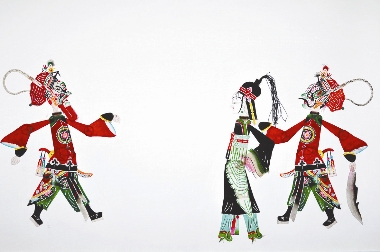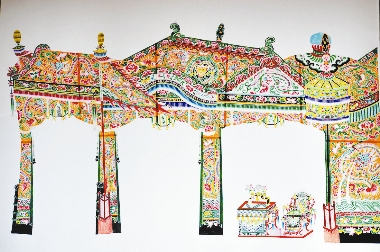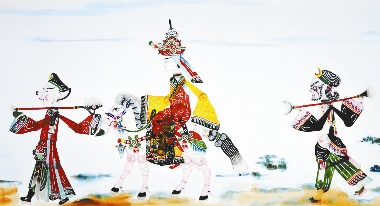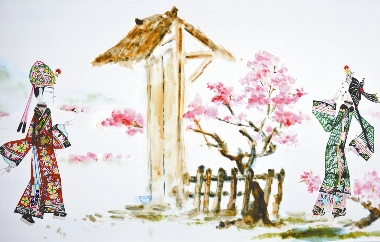



Newman Huo
AFTER being tortured by a corrupt official, a weak and helpless widow named Dou E is forced to confess that she has killed her so-called father-in-law. As she is led to her execution, Dou E predicts there will be snow in midsummer at the outrage of her death. As she is beheaded, snow falls.
The shadow play scene of Dou E being led to her execution from “The Injustice of Dou E,” a Chinese drama by the playwright Guan Hanqing of the Yuan Dynasty, can now be seen at the Guan Shanyue Art Museum.
The museum is displaying a collection of traditional Shaanxi provincial shadow plays until March 13.
The collection consists of hundreds of traditional patterns and figures used in classic plays, such as “The Injustice of Dou E,” “Journey to the West,” and “Legend of the White Snake.”
The collection was put together by Chen Yiwen, a folk artist in Huayin, Shaanxi Province, under the supervision of He Yinglin, chief of the Deqing Society of Shadow Plays in Shaanxi Province.
As an age-old popular folk art, shadow plays were once a very important aspect of Chinese folk culture.
It is said that the shadow play originated in either Shaanxi or Henan Province during the Han Dynasty (206 B.C-A.D. 220) and flourished in the Song Dynasty (960-1279). Its popularity peaked in the Yuan Dynasty (1271-1368). During the Ming (1368-1644) and Qing (1644-1911) dynasties it separated into many forms.
The main prop of the shadow play is the “piying” or leather silhouette. In the north the leather is made mainly from donkey hide while in the south from buffalo hide. The supporting rods are usually made from sorghum stalks.
The images painted on the silhouette are usually figures from operas, folk stories, historical legends or myths.
During a performance, a curtain is hung against which a lamp or candle is lit for the highlight. Behind the curtain the performers manipulate the figures to form silhouettes, accompanied by reading, singing, acting and drumming.
Before the advent of modern drama and cinema, shadow play had an important role in entertainment and education in traditional Chinese society. They were often performed during festivals and social gatherings such as temple fairs.
Dates: Through March 13
Hours: 9 a.m.-5 p.m. Closed Monday
Venue: Guan Shanyue Art Museum (关山月美术馆)
Add: 6026 Hongli Road, Futian District (福田区红荔路6026号)
Buses: 10, 14, 25, 34, 105, 111, 215, 228, 238, 322, 350, 371
Metro: Shao Nian Gong Station (Children’s Palace Station 少年宫站), Exit B
|

